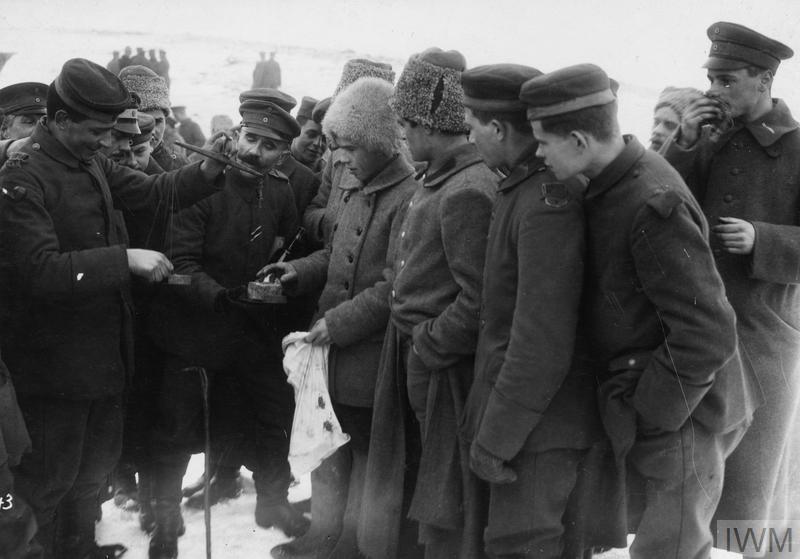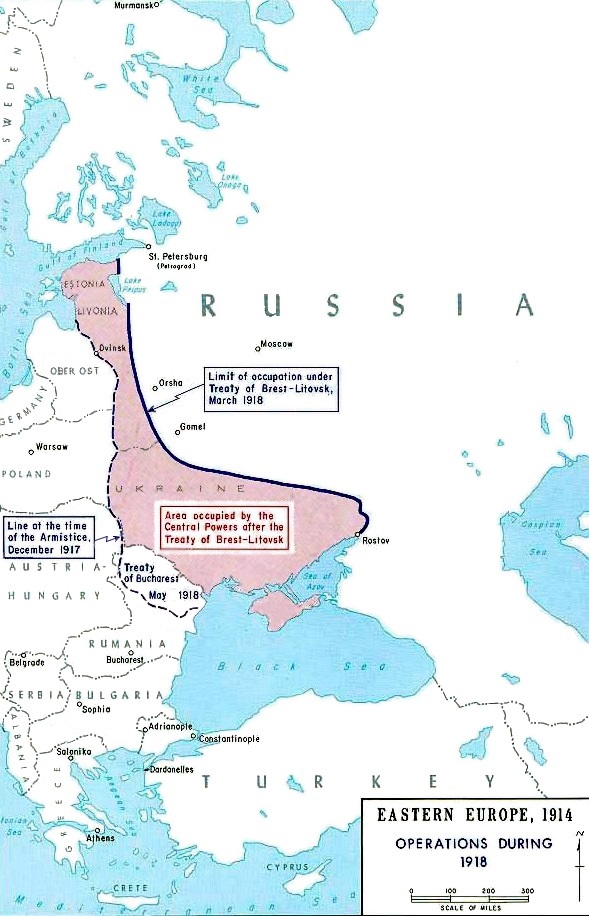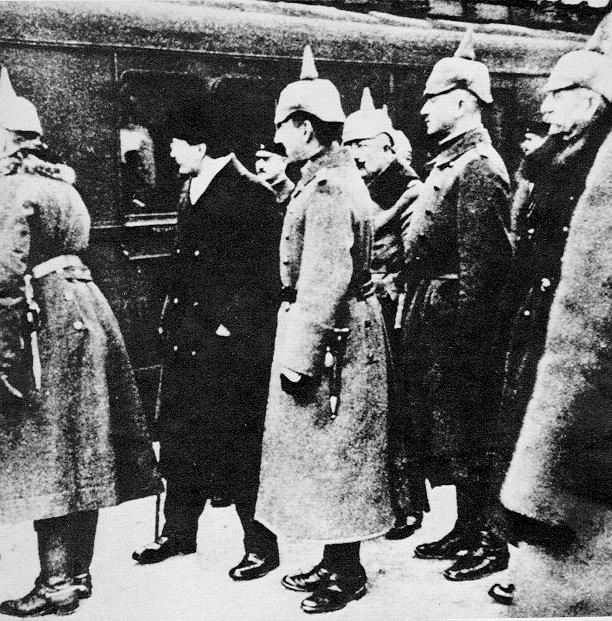Treaties of Brest-Litovsk (1918)
Enlarge text Shrink text- Matos Ochoa, S. Tratado de Paz de Brest-Litovsk, 1972:p. 6 (Tratado de Brest-Litovsk)
- Mirnye peregovory v Brest-Litovske s 22/9 dekabri︠a︡ 1917 g. po 3 marta (18 fevrali︠a︡) 1918 g., 1920-:v. 1, p. 1, etc. (Brest-Litovskie mirnye peregovory; a treaty between Russia and Germany, Austria-Hungary, Turkey, and Bulgaria)
- Brit, Museum Cat.:v. 42 (Brest-Litovsk, Treaties of)
- Bolʹsh. sov. ėnt︠s︡ykl., 3rd ed.:v. 4, p. 25 (Brestskiĭ mir 1918; a treaty between Russia and Germany, Austria-Hungary, Bulgaria, and Turkey concluded on 3 March 1918 and annulled by the Soviet government on 13 Nov. 1918. There was also a separate treaty between Germany andthe T︠S︡entralʹnai︠a︡ Rada of the Ukrianian nationalist government on 9 Feb. 1918)
- LC data base, 01-06-92(hdg.: Brest-Litovsk, Treaty of, Mar. 3, 1918 (Russia); usage: Friede von Brest-Litowsk; Traité de Brest-Litovsk)
- Ukr. rad. enykl.:v. 2, p. 32 (Brestsʹkyĭ myr 1918)
- Encyc. Brit. Micropaedia:(Brest-Litovsk, Treaties of. Peace treaties signed at Brest-Litovsk by the Central Powers with the Ukrainian Republic on Feb. 9, 1918 and with Soviet Russia [R.S.F.S.R.] on March 3, 1918 which concluded hostilitiesbetween those countries during World War I. When negotiations stalled between the Soviet delegation, the Central Powers concluded a separate peace with the nationalist Ukrainian delegation on Feb. 9. By Feb. 23 the Germans issued an ultimatumgiving the Russians five days to open and conclude talks. On March 3 the Soviet government accepted the treaty by which the R.S.F.S.R. lost the Ukraine, its Polish and Baltic territories, and Finland. This treaty was ratified on March 15 by theCongress of Soviets. Both the Ukrainian and Russian Soviet treaties were subsequently annulled by the Armistice of Nov. 11, 1918 which marked the allied defeat of Germany)
- Encyc. of Ukraine:v. 1, p. 296 (Brest-Litovsk, Peace Treaty of. A peace treaty between the Ukrainian National Republic and the Central Powers of Germany, Austria-Hungary, Turkey, and Bulgaria, signed on 9 Feb. 1918 over Bolshevik protests.When the Russian Bolshevik government began to negotiate an armistice on the eastern front, the government of the Ukrainian Central Rada also began negotiations, because the Austro-German and Rumanian fronts ran through Ukrainian territory. Withthis treaty the Central Powers recognized the independence and sovreignty of the UNR and agreed upon its general boundaries.The Central Powers then signed a separate peace treaty with the Bolshevik government on 3 March 1918 at Brest-Litovsk inwhich Russia agreed to recognize the concluded treaty with the UNR, to sign a peace treaty with Ukraine immediately, and to define the border between Russia and Ukraine. Because of its treaty with Germany the Allied Powers suspended relationswith the UNR. The Treaty of Rapallo of 1922 between Germany and Soviet Russia canceled the German commitments made at Brest-Litovsk, while the disintegration of the Austro-Hungarian Empire annulled Austria's commitments to the UNR. Later Turkeyrenounced the Treaty of Brest-Litovsk by signing a treaty with the Ukrainian SSR in 1922)
The Treaty of Brest-Litovsk was a separate peace treaty signed on 3 March 1918 between Soviet Russia and the Central Powers (Germany, Austria-Hungary, the Ottoman Empire, and Bulgaria), by which Russia withdrew from World War I. The treaty, which followed months of negotiations after the armistice on the Eastern Front in December 1917, was signed at Brest-Litovsk (now Brest, Belarus). The Soviet delegation was initially headed by Adolph Joffe, and key figures from the Central Powers included Max Hoffmann and Richard von Kühlmann of Germany, Ottokar Czernin of Austria-Hungary, and Talaat Pasha of the Ottoman Empire. In January 1918, the Central Powers demanded secession of all occupied territories of the former Russian Empire. The Soviets sent a new peace delegation led by Leon Trotsky, which aimed to stall the negotiations while awaiting revolutions in Central Europe. A renewed Central Powers offensive launched on February 18 captured large territories in the Baltic region, Belarus, and Ukraine and forced the Soviet side to sue for peace. Under the terms of the treaty, Russia lost control of Ukraine, Poland, Belarus, Lithuania, Latvia, and Estonia, and its Caucasus provinces of Kars and Batum. The lands comprised 34% of the former empire's population, 54% of its industrial land, 89% of its coalfields, and 26% of its railways. The Soviet government also confirmed the independence of Finland, which it had recognized in January 1918, and pledged to end its war with the Ukrainian People's Republic, which the Central Powers had recognized under the prior Treaty of Brest-Litovsk (9 February 1918). A supplementary protocol signed in August 1918 required Russia to pay Germany war reparations of six billion marks. The treaty was controversial in Russia, giving a unifying cause to the White movement and opening a rift between the Bolsheviks and the Left Socialist-Revolutionaries, whose representatives withdrew from the Council of People's Commissars after its signing and later rebelled in the Left SR Uprising. The treaty was annulled by the Armistice of 11 November 1918, in which Germany surrendered to the western Allied Powers. Subsequent attempts by the Soviets to restore power in the lost territories during the Russian Civil War (1917–1922) had mixed results, with the Red Army being defeated in the independence wars of the three Baltic countries and in the Polish–Soviet War, but achieving victory in its invasions of Azerbaijan, Armenia, and Georgia and in the Ukrainian–Soviet War. The border with Turkey established by the treaty was largely affirmed by the Treaty of Kars (1921). Under the Treaty of Rapallo (1922), Russia and Germany renounced all territorial and financial claims against each other. The Russian borders established by the treaty bear an almost exact similarity to the post-1991 borders established after the fall of the Soviet Union.
Read more on Wikipedia >
 Title
Title











